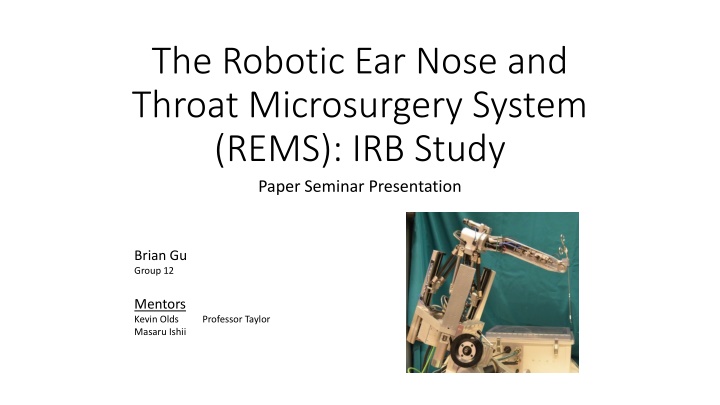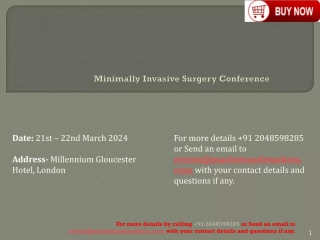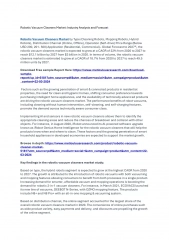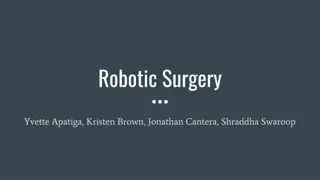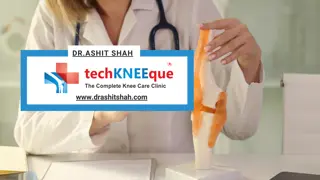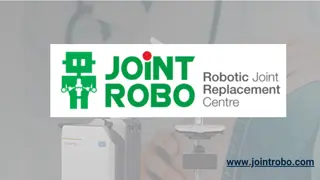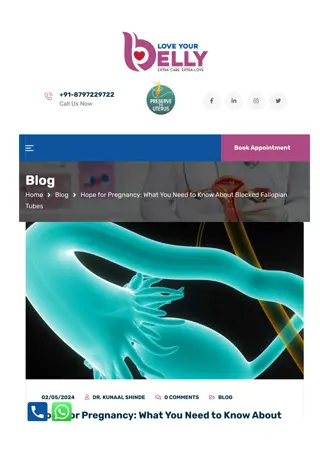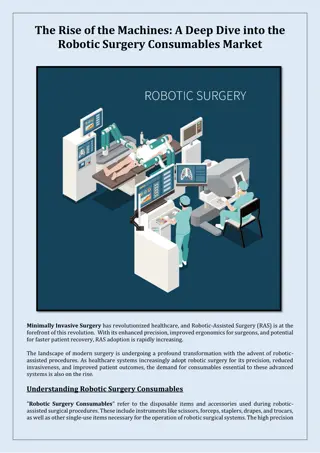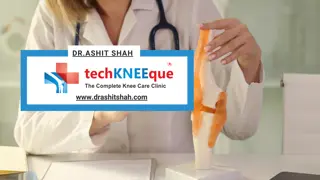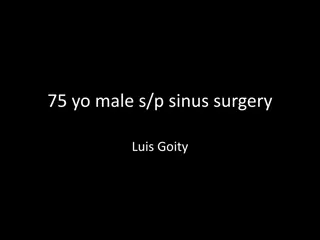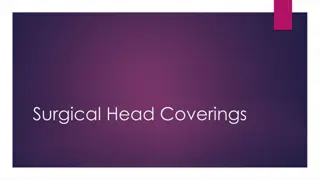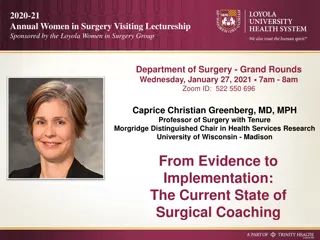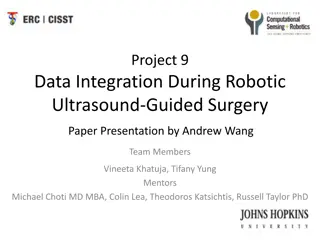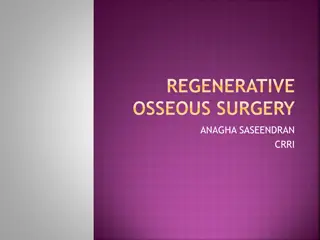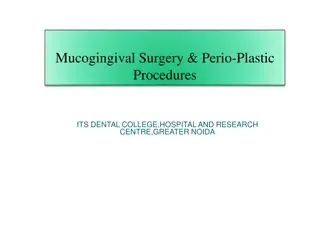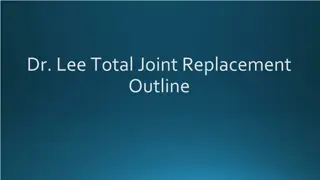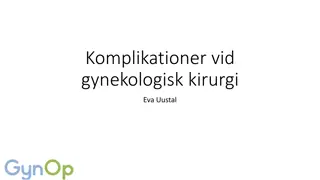Robotic Surgical Skill Evaluation in Sinus Surgery: A Comprehensive Study
The REMS project focuses on robotic ear, nose, and throat microsurgery systems, with one sub-project aiming to validate if robotic assistance enhances surgical skill compared to traditional methods. A key paper by Ahmidi et al. explores robotic path planning for surgeon skill evaluation in minimally-invasive sinus surgery, addressing optimal surgical paths and motion quality assessment. This study aims to quantify surgical skill objectively, offering valuable insights for skill evaluation.
Download Presentation

Please find below an Image/Link to download the presentation.
The content on the website is provided AS IS for your information and personal use only. It may not be sold, licensed, or shared on other websites without obtaining consent from the author.If you encounter any issues during the download, it is possible that the publisher has removed the file from their server.
You are allowed to download the files provided on this website for personal or commercial use, subject to the condition that they are used lawfully. All files are the property of their respective owners.
The content on the website is provided AS IS for your information and personal use only. It may not be sold, licensed, or shared on other websites without obtaining consent from the author.
E N D
Presentation Transcript
The Robotic Ear Nose and Throat Microsurgery System (REMS): IRB Study Paper Seminar Presentation Brian Gu Group 12 Mentors Kevin Olds Masaru Ishii Professor Taylor
Presentation Overview Project Review Paper Selection What and Why Relevance Paper Summary Introduction Experiments and Methods Results Conclusion
Project Review REMS Sinus Validation Study (one of three sub-projects) Primary Goal: Determine if robotic surgical assistance with REMS improves surgical skill compared to conventional methods Protocol: 20 students recruited and separated into two groups 10 learn sinus procedure with REMS assistance 10 learn with current, nonrobotic protocol Anaylze results (accuracy comparison etc.) An expert group will perform the task to gather data on how REMS affects professionals
Paper Selection Robotic Path Planning for Surgeon Skill Evaluation in Minimally- Invasive Sinus Surgery Narges Ahmidi, Gregory D. Hager, Lisa Ishii, Gary L. Gallia, and Masaru Ishii Department of Computer Science Citation Ahmidi N, Hager GD, Ishii L, Gallia GL, Ishii M. Robotic path planning for surgeon skill evaluation in minimally-invasive sinus surgery. Med Image Comput Comput Assist Interv. 2012;15(Pt 1):471-8.
Paper Selection What and Why? Published in 2012 by this department Co-authored by our own mentor Dr. Ishii Purpose: Answer two questions: Can comparison with an optimal surgical path be used to establish a measure for skill evaluation? Does quality of motion, independent of path, provide additional information?
Paper Selection Relevance Purpose of our study is to evaluate surgical skill between two groups: Free hand learning vs learning with the robot had a very nebulous idea of what skill meant This paper provides a way an accurate and objective way to quantify skill Provides methods to evaluate data for our own study
Paper Summary- Introduction Current method of evaluating surgical skill is the OSATS Skill rated from 0-3 (0 being complete novice, 3 being an expert) Requires a committee of faculty surgeons to rank surgical trials of residents Is there a way to accurately and automatically assess skill? Prior work used HMM (Hidden Markov Models) Split skill rating into novice group (OSATS score 0 or 1) and expert group (OSATS score 2 or 3) Was only 82.5% accurate with experts and 77.8% accurate with novices
Paper Summary- Introduction cont. Answering the first two questions earlier in the presentation Authors developed two metrics to compute skill SPP (Surgical Path Planner) DCC (Descriptive Curve Coding) Both metrics are evaluated with FESS (Functional Endoscopic Sinus Surgeries) and compared with the ground truth (OSATS)
Paper Summary- Experiment and Methods 20 subjects (13 novices and 7 experts) performed FESS Subjects tool tip tracked and head registered to optical tracker Touch 3 targets in the sinuses of a cadaver head Right Maxillary Sinus, right Eustachian Tube, left Lamina Papyracea Every trial graded 0 or 1 (0=novice, 1=expert) by supervising surgeons, OSATS score calculated as the sum of all 3 trials.
Paper Summary- Experiment and Methods Recorded paths were run through three methods to replicate OSATS: SPP only SPP+DCC HMM from prior paper Compare results of 3 to ground truth (OSATS)
Paper Summary- Experiment and Methods Surgical Path Planner (SPP) With a start point and end point, generate a shortest path with given constraints Nasal anatomy and stiffness of anatomy (skin, bone, tissue) extracted from CT scan data Model tool as a cylindrical robot with tool length 200mm, radius 2mm, and 5 degrees of freedom
Paper Summary- Experiment and Methods Surgical Path Planner (SPP) cont. Use Probabilistic Road Mapping and Gradient Descent to create shortest path from just outside the nose to target point while minimizing collisions with nasal structures
Paper Summary- Experiment and Methods Surgical Path Planner (SPP) cont. Each trial generates a feature vector containing: Correlation of SPP vs trial s path Mean and standard deviation of the difference in paths A support vector machine was trained to classify trials into OSATS ratings (0-3)
Paper Summary- Experiment and Methods Descriptive Curve Coding (DCC) Quantifies the smoothness of paths, SPP cannot do this Records the local curvature of a path from an imaginary observer traveling on the path Traces the amount of change in the observers coordinate system
Paper Summary- Experiment and Methods Descriptive Curve Coding (DCC)
Paper Summary- Experiment and Methods Descriptive Curve Coding (DCC) Benefits of DCC: Flexible vocabulary Rotation and translation invariant: independent of surgical setup and tracker Easily extractable feature vector can be added to the SPP SVM Augmented SVM can be used to evaluate skill
Paper Summary- Results Performance of three models assessed by comparing their predicted OSATS score to the true OSATS score
Paper Summary- Conclusion SPP+DCC is very accurate in objectively determining skill Clear advantage over the previous HMM method Paths expert surgeons take in sinus are very close to ones computed by SPP
Good and Bad Good Easy to follow (even for someone not super familiar with machine learning) Short but detailed Very relevant to analyzing data for our own study Bad None, everyone from Hopkins is perfect (kidding) Confused about some of the statistics (ROC curve) Hard to understand exactly what HMM was Had to go and read previous paper
